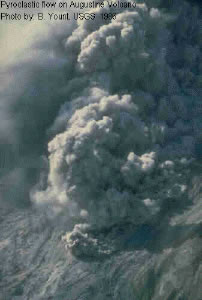This is an image of a pyroclastic flow going down the slopes of a volcano.
Click on image for full size
Image from: U.S. Geological Survey, photo by B. Yount
Pyroclastic Material
Pyroclastic material is another name for a cloud of ash, lava fragments carried through the air, and vapor. Such a flow is usually *very* hot, and moves *rapidly* due to buoyancy provided by the vapors. Pyroclastic flows can extend miles from the volcano, and devastate life and property within their paths.
Damage from pyroclastic flows can occur by impact of rock fragments moving at high speeds or burial of the surface with ash and coarser debris a foot or more thick. Hot pyroclastic surges may start fires and kill or burn people and animals. The most devastating pyroclastic flow occured during the eruption of Mt. Pelee in 1902.
You might also be interested in:
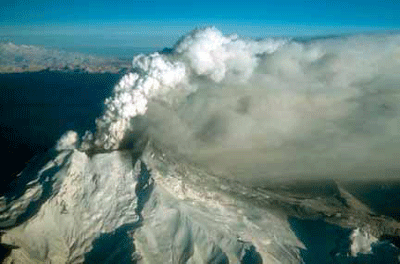
Ash is made of millions of tiny fragments of rock and glass formed during a volcanic eruption. Volcanic ash particles are less than 2 mm in size and can be much smaller. Volcanic ash forms in several ways
...more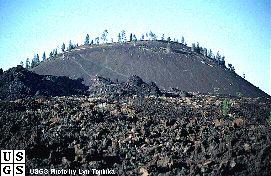
Cinder cones are simple volcanoes which have a bowl-shaped crater at the summit and only grow to about a thousand feet, the size of a hill. They usually are created of eruptions from a single opening,
...more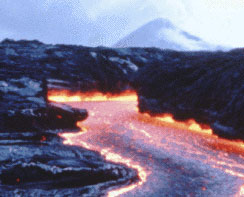
Lava can move in broad flat lava flows, or it can move through tight channels or tubes. Lava flows tend to cool quickly and flow slowly. The fastest lava outside of channels moves at about 6 mi/hr an easy
...more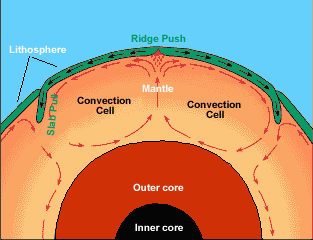
Plates at our planet’s surface move because of the intense heat in the Earth’s core that causes molten rock in the mantle layer to move. It moves in a pattern called a convection cell that forms when
...more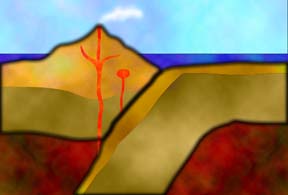
Many kinds of surface features are clues that our lithosphere is sliding. Two types of features can form when plates move apart. At mid ocean ridges, the bottom of the sea splits apart and new crust is
...more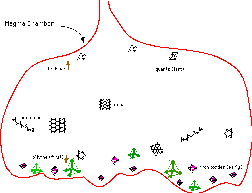
Magma consists of remelted material from Earth's crust and fresh material from other regions near the Earth's surface. When magma is erupted onto the surface in the form of lava, it becomes silicate rock.
...more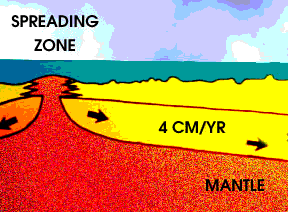
As the Earth cools, hot material from the deep interior rises to the surface. Hot material is depicted in red in this drawing, under an ocean shown in blue green. The hotter material elevates the nearby
...more


